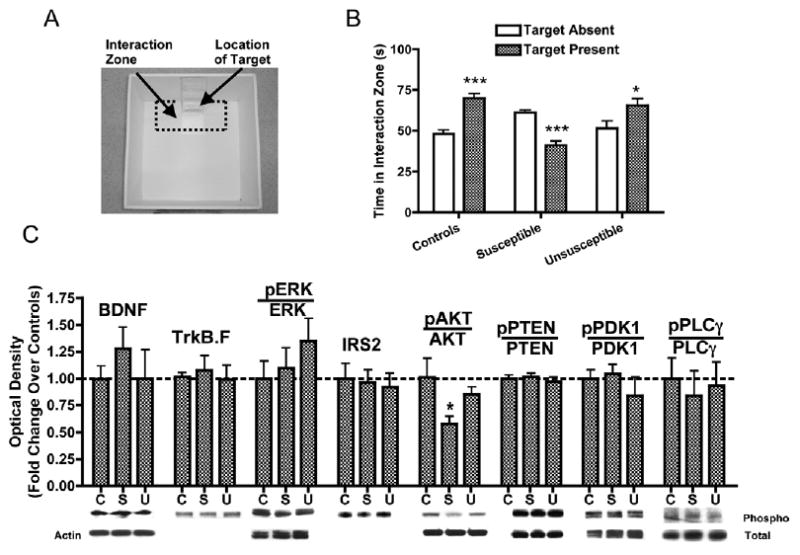Figure 1.

Chronic social defeat decreases phospho-AKT levels in the ventral tegmental area (VTA). (A) The photograph depicts the location of the “interaction zone” (dotted lines) within an open-field arena used for mouse social interaction testing. An unfamiliar CD1 mouse (“target”) is placed inside the wire mesh cage during the second trial. (B) Social interaction times for nondefeated control mice (t54 = 5.82, p< .0001, n = 28), susceptible (interaction ratio [IR] < 100, t52 = 6.52, p < .0001, n = 27), and Unsusceptible mice (IR ≥ 100, t32 = 2.30, p < .05, n = 17) mice (see Methods and Materials). (C) The VTA punches from c57BL/6 mice 1 day after interaction testing showed that chronic social defeat causes a approximately 40% reduction in phospho-AKT levels [F(2,42) = 3.41, p < .05, n = 11–18), without changes in the total level of AKT or in the total or phosphorylated levels of several other signaling molecules. Data are shown as mean + SEM, with * and *** indicating significant (p < .05, p < .01, or p < .001, respectively) comparisons from respective controls. C, controls; BDNF, brain-derived neurotrophic factor; ERK, extracellular-signal regulated kinase; IRS2, insulin-receptor substrate 2; PTEN, phosphatase and tensin homolog; PDK1, phospho-inositol dependent kinase 1; PLCγ, phospholipase Cγ; S, susceptible; TrkB.F, full-length tropomyosin-related kinase B; U, unsusceptible.
